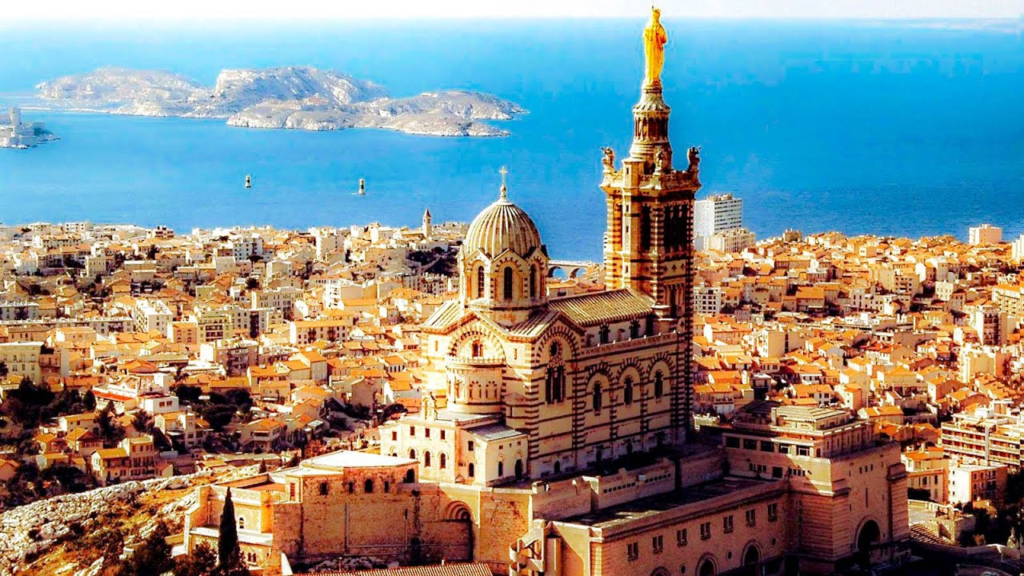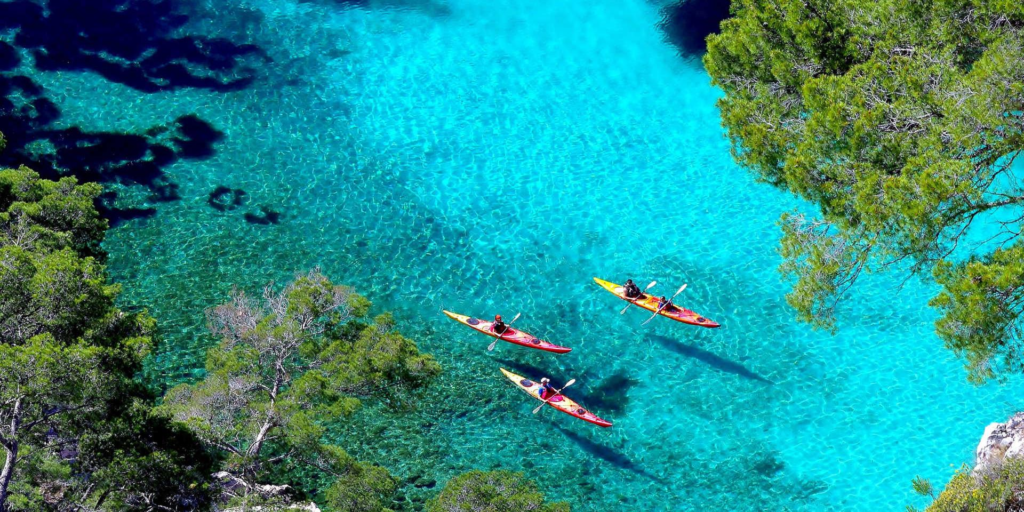Marseille, the vibrant port city in the south of France, is a treasure trove of history, culture, and stunning natural beauty. As the second-largest city in France, Marseille offers a unique blend of ancient heritage and modern flair. Whether you’re strolling through its historic neighborhoods, exploring its picturesque coastline, or indulging in its renowned culinary scene, there’s something for everyone in this Mediterranean gem. Here’s a detailed guide to the top seven destinations you must visit in Marseille, along with some practical travel tips to make the most of your trip.
1. Marseille Vieux-Port (Old Port)

The Vieux-Port, or Old Port, is the beating heart of Marseille. This historic harbor has been the city’s bustling center for over 2,600 years, and today it remains a hub of activity. Here, you can watch fishermen sell their fresh catch at the daily fish market, enjoy a leisurely stroll along the waterfront, or simply relax at one of the many cafés and restaurants that line the quays.
Travel Tip: Visit early in the morning to experience the vibrant fish market, and for a quieter, more peaceful atmosphere, aim to explore the port during the early hours or late afternoon. Consider taking a boat tour from the Vieux-Port to explore the Calanques or the Frioul Archipelago.
2. Basilique Notre-Dame de la Garde Marseille

Perched high on a hill overlooking the city, the Basilique Notre-Dame de la Garde is Marseille’s most iconic landmark. Known locally as “La Bonne Mère,” this stunning basilica offers breathtaking panoramic views of Marseille and the surrounding Mediterranean coastline. The interior of the basilica is equally impressive, adorned with intricate mosaics and ex-votos left by grateful worshippers.
Travel Tip: To avoid the steep walk up to the basilica, consider taking the tourist train from the Vieux-Port, which offers a scenic and convenient route. Alternatively, if you enjoy walking, the climb is worth it for the spectacular views along the way. Don’t forget to bring a camera to capture the stunning vistas from the top.
3. Le Panier District de Marseille

Le Panier is Marseille’s oldest neighborhood, a labyrinth of narrow streets, colorful buildings, and hidden squares that date back to the city’s Greek and Roman origins. Walking through Le Panier feels like stepping back in time, with its charming old-world atmosphere, vibrant street art, and artisanal shops. Be sure to visit the Vieille Charité, a 17th-century almshouse that now houses museums and cultural spaces.
Travel Tip: Wear comfortable shoes, as the streets in Le Panier are steep and cobblestoned. Take your time to explore the area, as it’s easy to miss some of the hidden gems tucked away in the narrow alleys. The neighborhood is also a great place to pick up unique souvenirs from local artisans.
4. Château d’If

The Château d’If, located on the small island of If in the Frioul Archipelago, is one of Marseille’s most famous landmarks, thanks to Alexandre Dumas’ novel “The Count of Monte Cristo.” This fortress-turned-prison offers a fascinating glimpse into the city’s history and a chance to explore the well-preserved cells where notorious prisoners were held. The views from the island back towards Marseille are simply stunning.
Travel Tip: Plan your visit on a clear day to fully enjoy the views of the Mediterranean Sea and Marseille’s coastline. Ferries to the island depart regularly from the Vieux-Port, but it’s a good idea to check the schedule in advance, especially during the off-season. Bring water and snacks, as there are limited facilities on the island.
5. MuCEM (Museum of European and Mediterranean Civilizations)

The MuCEM is a must-visit for culture and history enthusiasts. This striking modern museum, located at the entrance to the Old Port, is dedicated to the rich history and culture of the Mediterranean region. The exhibits range from ancient artifacts to contemporary art, offering a comprehensive look at the civilizations that have shaped this part of the world. The museum’s architecture, with its intricate lattice design, is a work of art in itself.
Travel Tip: Allocate at least a couple of hours to fully explore the museum’s extensive exhibits. The rooftop terrace offers spectacular views of the sea and the city, so make sure to bring your camera. The MuCEM is connected to Fort Saint-Jean by a sleek footbridge, allowing you to easily visit both sites in one trip.
6. Parc National des Calanques

For nature lovers, the Parc National des Calanques is an absolute must-see. This national park stretches along the coastline between Marseille and Cassis and is famous for its dramatic limestone cliffs, crystal-clear waters, and hidden beaches. The Calanques offer some of the best hiking, swimming, and kayaking opportunities in the region, making it a perfect escape from the city’s hustle and bustle.
Travel Tip: Wear sturdy hiking shoes and bring plenty of water and sunscreen, as the trails can be challenging and the sun intense. If you prefer to see the Calanques from the water, consider booking a boat tour or renting a kayak. Some of the more popular Calanques can get crowded, so try to visit early in the morning or on weekdays to avoid the crowds.
7. La Canebière

La Canebière is Marseille’s most famous street, running from the Vieux-Port up to the Réformés Church. Once the city’s main thoroughfare, La Canebière is now a lively area filled with shops, cafés, and historic buildings. Walking along this boulevard offers a glimpse into Marseille’s past and present, with its blend of old-world charm and modern vibrancy.
Travel Tip: Take your time to explore the side streets branching off La Canebière, where you’ll find unique shops, local markets, and less crowded cafés. If you’re visiting on a Saturday, be sure to check out the Noailles market, just off La Canebière, for an authentic taste of Marseille’s multicultural food scene.
Tips and Advice to Visit Marseille
- Best Time to Visit: The ideal time to visit Marseille is during the spring (April to June) or early autumn (September to October) when the weather is pleasant, and the tourist crowds are thinner. Summer can be hot and crowded, especially in the popular tourist areas.
- Transport : Marseille has a well-connected public transport system, including buses, trams, and a metro. The city is also relatively walkable, especially around the Vieux-Port and Le Panier. For trips outside the city, such as to the Calanques, consider renting a car or taking a boat tour.
- Food : Don’t leave Marseille without trying its signature dish, bouillabaisse, a rich fish stew traditionally made with local Mediterranean fish. Also, sample other local specialties like panisse (chickpea fritters) and pastis (an anise-flavored spirit). The markets, particularly in the Noailles area, offer a great opportunity to taste fresh local produce and delicacies.
- Safety: Like any major city, Marseille has its share of petty crime, so it’s wise to stay vigilant, especially in crowded areas and public transport. Keep your belongings secure, and avoid poorly lit or deserted areas at night.








